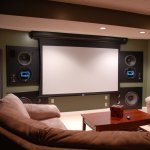I've always made enclosures out of MDF and used but joints with wood glue and sheet rock screws. Is there a better way? I'm considering using tongue and groove joints, but should I stay with screws? Has anyone used pneumatic nail guns, either brads or finish nails? This is really easy, but I wonder if it won't hold well. Any thoughts or experiences?




 Reply With Quote
Reply With Quote
 Have Fun -
Have Fun - 


 I was new to routers, but it was really easy. Just buy or borrow a lot of clamps if you have 48 inch seams like I did!
I was new to routers, but it was really easy. Just buy or borrow a lot of clamps if you have 48 inch seams like I did!








